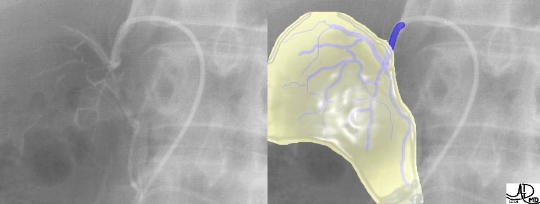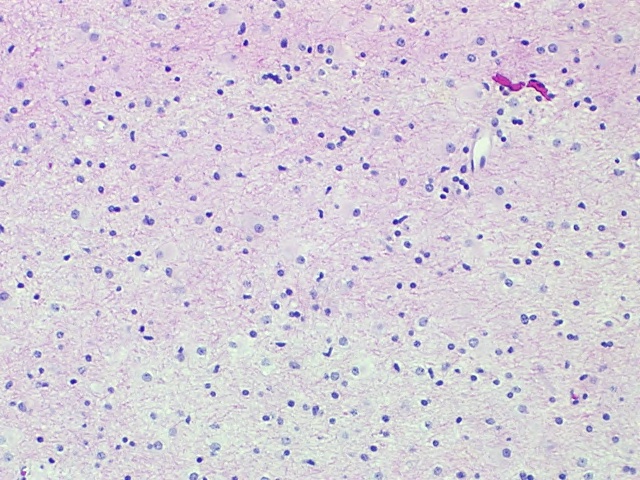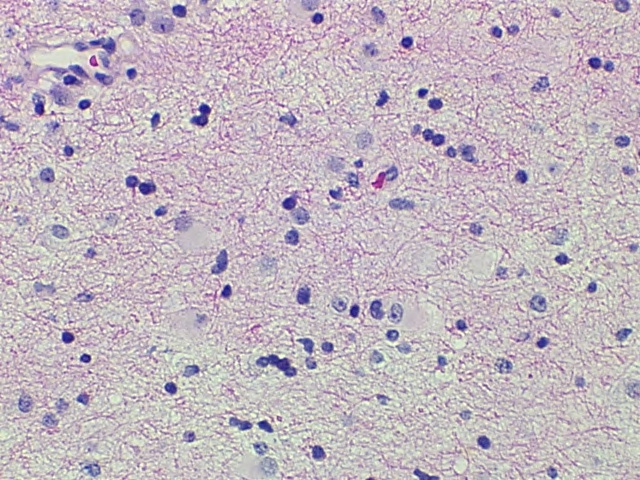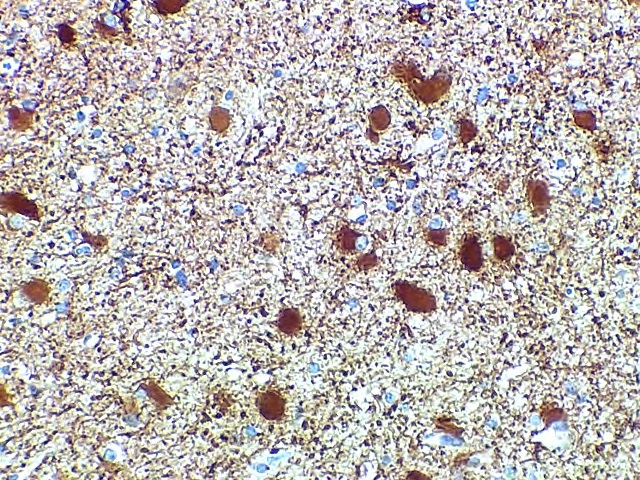Astrocytoma
Sumit Karia MD
The Common Vein Copyright 2010
Definition
An astrocytoma is a type of glioma, that is, a tumor of the CNS that arises from glial cells. From the gliomas, it is the most common. As the name implies, it is a growth of astrocytes. Because all the CNS is involved in neuroepithelium, the tumors can arise in any part. They can or not be infiltrating and that is how they are mainly classified. Infiltrating tumors account for about 80% of adult primary brain tumors in adults and are usually found in the telencephalon. The growth expands and distorts the invaded brain. The degree of invasion depends on the size ? it can vary from a few centimeters to vast lesions that substitute the entire hemisphere. Supratentorial astrocytomas are most common in adults and are most commonly located in the cerebral hemispheres. Glioblastoma multiforme is the most malignant form of an astrocytoma, being the most common type of glioma.
Their degree of invasion and rate of growth, many times secondary to specific mutations, allows pathologist to differentiate them into fibrillary astrocytomas, protoplasmic astrocytomas, gemistocytic astrocytomas, anaplastic astrocytomas, giant-cell glioblastomas, gliosarcomas, pleomorphic xanthoastrocytomas, choroid gliomas, pilocytic astrocytomas and subependymal giant-cell astrocytomas.
Functionally, as in all brain tumors, the symptoms are produced by tumor invasion of the parenchyma, or the edema that will compress brain tissue, or an eventual cerebrospinal fluid obstruction.
A patient with a brain tumor can present with one or both of two types of symptoms and signs. Generalized symptoms, which typically reflect the increased intracranial pressure that results, and in which patients present with headache, lethargy, nausea and vomiting. The so called lateralizing symptoms refer to clinical clues to its location, reflecting location of the tumor, which include hemiparesis, hemisensory deficits, aphasia, visual field changes.
Radiologically, images seen in CT/MRI reflect the necrotic nature, associated with hemorrhages and neovascularity. A heterogenous often lobulated and possibly partially calcified mass is thus seen with central necrosis, ring enhancement, surrounded with vasogenic edema. MRI can distinguish the content of the mass, since it carries a different signal compared to CSF ? compared to gray matter, it has T1 and T2 prolongation. In many cases there is spread through the corpus callosum with involvement of both frontal lobes, in which the image resembles a butterfly.
In terms of treatment, surgical resection, chemotherapy, and radiation therapy are all considered to be standard, depending on the grade
 
H&E

H&E

GFAP Stain |
|
This high power polymicrograph demonstrates large cells with peripherally located nuclei within round pale cells. These cells are seen on a background of fibrillary tissue. Immunocytochemistry staining with GFAP which is a glial cell marker stains the cytoplasm of these large tumor cells which are round in configuration, supporting a subtype of gemistocytic astrocytoma. Note that there are reactive, nonneoplastic astroctyes which are positive on GFAP and are less regular in shape due to their cell processes.
Images Courtesy of Cheryl Spencer, M.A. and Ivana Delalle, MD, PhD Department of Pathology Boston University School of Medicine 98484 Astrocytoma (S06-16692)3039496
|
DOMElement Object
(
[schemaTypeInfo] =>
[tagName] => td
[firstElementChild] => (object value omitted)
[lastElementChild] => (object value omitted)
[childElementCount] => 2
[previousElementSibling] =>
[nextElementSibling] =>
[nodeName] => td
[nodeValue] =>
This high power polymicrograph demonstrates large cells with peripherally located nuclei within round pale cells. These cells are seen on a background of fibrillary tissue. Immunocytochemistry staining with GFAP which is a glial cell marker stains the cytoplasm of these large tumor cells which are round in configuration, supporting a subtype of gemistocytic astrocytoma. Note that there are reactive, nonneoplastic astroctyes which are positive on GFAP and are less regular in shape due to their cell processes.
Images Courtesy of Cheryl Spencer, M.A. and Ivana Delalle, MD, PhD Department of Pathology Boston University School of Medicine 98484 Astrocytoma (S06-16692)3039496
[nodeType] => 1
[parentNode] => (object value omitted)
[childNodes] => (object value omitted)
[firstChild] => (object value omitted)
[lastChild] => (object value omitted)
[previousSibling] => (object value omitted)
[nextSibling] => (object value omitted)
[attributes] => (object value omitted)
[ownerDocument] => (object value omitted)
[namespaceURI] =>
[prefix] =>
[localName] => td
[baseURI] =>
[textContent] =>
This high power polymicrograph demonstrates large cells with peripherally located nuclei within round pale cells. These cells are seen on a background of fibrillary tissue. Immunocytochemistry staining with GFAP which is a glial cell marker stains the cytoplasm of these large tumor cells which are round in configuration, supporting a subtype of gemistocytic astrocytoma. Note that there are reactive, nonneoplastic astroctyes which are positive on GFAP and are less regular in shape due to their cell processes.
Images Courtesy of Cheryl Spencer, M.A. and Ivana Delalle, MD, PhD Department of Pathology Boston University School of Medicine 98484 Astrocytoma (S06-16692)3039496
)
https://beta.thecommonvein.net/wp-content/uploads/2023/05/98484.jpg https://beta.thecommonvein.net/wp-content/uploads/2023/05/39496.jpg
http://www.thecommonvein.net/media/98485.jpg http://www.thecommonvein.net/media/98486.jpg http://www.thecommonvein.net/media/98484.jpg




